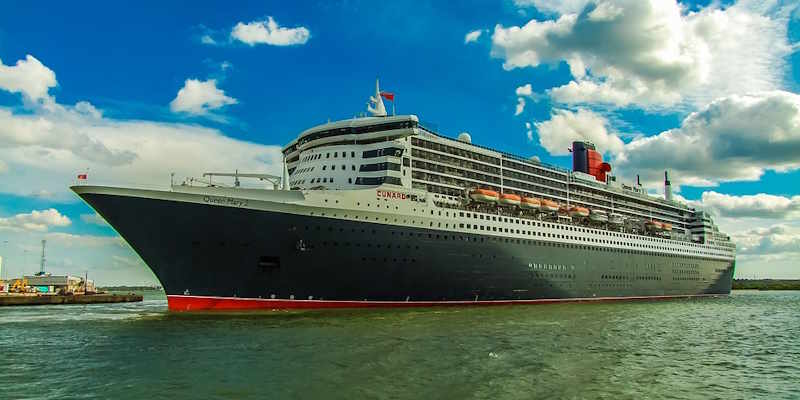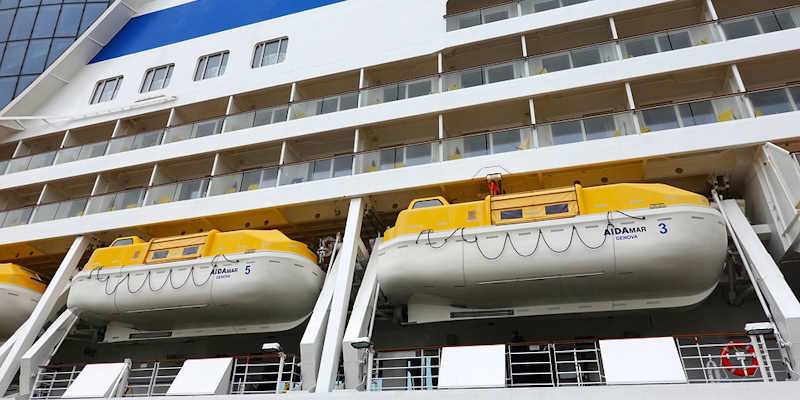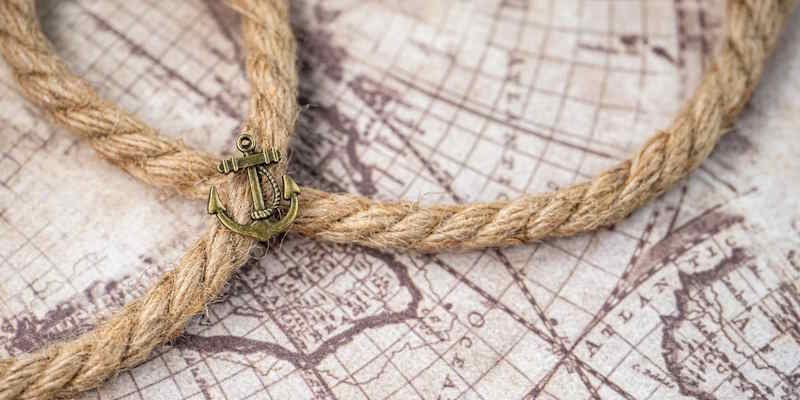Thinking about your first transatlantic cruise? Picture it: spending lazy days at sea, the thrill of endless ocean sunrises, and evenings under a blanket of stars as you glide through calm waters. But here’s a heads up—sailing the Atlantic isn’t your classic Caribbean island hop. Instead, preparing for a transatlantic voyage calls for a savvy game plan to dodge common blunders that can send your cruise experience into the doldrums.
Seasoned travelers rave about crossing the Atlantic Ocean as the ultimate escape. They talk about life onboard, filled with stunning sunrises and sunsets, lazy afternoons, and ample time to do everything—or nothing at all. Then, there’s the added charm of rare ports that invite you off the beaten path with immersive shore excursions and unforgettable onshore moments.
But, like any cruise adventure, preparation is vital. The Atlantic doesn’t always offer the same calm vibes as a Caribbean cruise. So, packing a few remedies for motion sickness might just save you from a memorable—but not-so-pleasant—adventure. Also, don’t pack like you’re heading to the Caribbean—this is the Atlantic! Think layers, versatility, and a touch of formality. Even booking the wrong cabin can mean missing out on spectacular ocean views.
How can you navigate the unchartered waters of booking a transatlantic cruise and enjoy every moment from embarkation day until your last port of call? Read on—this guide has tips for avoiding common mistakes when cruising the Atlantic.
What’s Special About Transatlantic Cruises?

Transatlantic cruising isn’t your typical Caribbean escape with a new port of call each morning. Instead, it’s an adventure of luxurious sea days that feel timeless and immersive. These voyages often include enriching onboard activities, a stop or two at unique ports—sometimes even including a stopover in the Azores—and ample time to explore every corner of the ship.
Transatlantic itineraries include hidden gems you’ll miss on regular cruises. They visit lesser-visited ports in the Mediterranean, Azores, and cities along North America’s eastern coast. Think of cobbled streets in charming European towns, mid-Atlantic islands, Iceland’s rugged beauty, and vibrant Canadian or U.S. cities.
Cruise Lines Offering Transatlantic Cruise

Most major cruise lines offer transatlantic cruises, also known as repositioning cruises. These are popular in the shoulder months when ships must reposition from the Caribbean to Europe. These one-way cruises usually happen in April and early May and then in late September or October.
Want an authentic transatlantic voyage? Why not consider booking Cunard’s Queen Mary 2 or QE2? They’re built for transatlantic crossings and sail throughout the year. One experienced cruiser shared, “The QM2 is the only true ocean liner left worldwide. She was built for the Atlantic, and she handles rough weather beautifully.” Another added, “The QE2 is probably the best ship you could be on in rough weather. Regardless of the waves outside, you can relax and enjoy the voyage.”

If you’re after non-stop activities, water parks, and nightly entertainment, repositioning cruises have got you covered. Lines like Royal Caribbean, Holland America, Celebrity, and Norwegian pack their transatlantic sailings with something for everyone. A cruiser once raved, “Royal Caribbean’s repositioning was a blast—daily activities, incredible shows, and the FlowRider kept us entertained the whole way across!”
Related reading: The pros and cons of booking a transatlantic cruise.
14 Mistakes to Avoid on a Transatlantic Cruise

What are the costly mistakes to avoid when booking an Atlantic crossing? Here’s my guide to knowing how to steer clear of iceberg-like blunders and ensure your cruise dreams don’t end up like the Titanic.
Don’t book a transatlantic cruise too early
Booking a transatlantic cruise too early might be a big blunder. Repositioning cruises are less popular, and you can snag sweet deals a few months out. Cruise lines often release discounts or add incentives like onboard credits to attract more passengers and fill cabins as departure dates approach. So, by waiting, you could score big time.
One cruiser lamented, “I booked a year in advance, only to find my cabin type discounted with extras six months out!” To avoid this, aim to book around six to nine months before departure to balance perks and availability. Also, track promotions and consider a refundable deposit to stay flexible if better deals pop up.
An exception to this rule is when booking a Cunard transatlantic crossing. Cunard’s iconic sailings, especially on the Queen Mary 2, tend to fill up quickly. For these sailings, experienced cruisers advise booking early to secure your preferred cabin.
Plan flights before booking

Forgetting to plan flights when booking your transatlantic cruise can leave you running aground with a last-minute scramble and high fares. Transatlantic and repositioning cruises are typically one way. So, considering the fight costs and airports is vital. Waiting too late can mean overpaying for airfare tickets or navigating challenging layovers.
One traveler shared, “I booked my cruise only to realize flights back home were either sold out or insanely expensive. Ultimately, my flights were the same price as the cruise ticket.” Unlike cruise promotions, airfare price drops are rare closer to departure.
Consider flying to cheaper, nearby airports. One experienced cruiser couple shared, “We saved a ton by flying into Orlando instead of Miami for our repositioning cruise. We spent a day at Orlando Universal Studios, traveled to Fort Lauderdale the next day, and sailed the day after. What an adventure.”
Don’t leave your cabin choice to chance

Leaving your cabin choice to chance on a transatlantic cruise? Big mistake. With many days at sea and few ports, that cabin becomes your private haven. Pick the wrong cabin, and you’re stuck with noisy spots near the elevators or obstructed ocean views. Trust me—nothing kills the cruise experience like the constant shuffle of passengers outside your door.
One cruiser put it perfectly: “I figured any cabin would do—until I was sandwiched between the kids’ club and the galley.” Avoid the gamble by researching cabin locations before booking. Look for midship rooms for stability or splash out on a balcony to savor those endless Atlantic views. You’ll thank yourself every morning.
Avoid a “guarantee cabin” when booking. The deal may seem sweeter, but you could end up in a less desirable part of the ship. Remember, the ship’s forward and aft are most prone to movement—something to think about when mid-Atlantic in rough seas.
Pack clothing for different climates

When packing for a transatlantic cruise, avoid the mistake of forgetting clothes for variable climates. Repositioning cruises typically start in one climate zone and end in a different one. And don’t forget those chilly Atlantic winds. They can cut right through you, even when the sun’s shining.
A first-time cruiser on an Atlantic crossing confessed, “I thought I’d packed enough layers, but I ended up spending a small fortune in the cruise ship shop on extra sweaters and hoodies.”
To avoid packing too much bulky clothing or not enough, pack strategically. In my experience, packing layers is essential. Think of a warm jacket and versatile items of clothing that work when it’s sunny or chilly. It’s all about being prepared for whatever the Atlantic—and those unpredictable ports—might throw your way.
Pack like a pro: onboard essentials are expensive

A common packing mistake for long voyages at sea is forgetting the essentials, as there’s no easy way to restock. Cruise ship shops are notoriously expensive, with inflated onboard prices. Expect to pay top dollar for basics like sunscreen, OTC medication, and toiletries.
One cruiser recalled, “I forgot my sunscreen and ended up paying three times the price for a smaller bottle.” To avoid this scenario, ensure your luggage is well-stocked with everything from sunscreen and pain relievers to toothpaste and personal hygiene products.
Remember, don’t underestimate the little things—travel-size items can add up, especially when prices are inflated onboard prices and extortionate cruise ship mark-ups.
Don’t overlook dining reservations

Skipping out on dining reservations? A common first-time cruiser mistake. Many specialty restaurants and unique dining experiences book up fast, especially on popular transatlantic cruises—sea days are long, and everyone’s craving something unique. Without a reservation, you might find yourself stuck with limited options or missing out on a highly-rated restaurant entirely.
One cruiser shared, “I waited until we boarded the QE2 to book Royal Afternoon Tea at the Queen’s Grill, but it was fully booked for the entire trip.” Experienced cruisers usually make dining reservations when booking the cruise.
Whether it’s the chef’s table, a seafood night, or a unique dining experience, securing those spots early will guarantee you enjoy the best flavors onboard.
Bring your own fun and entertainment

Don’t fall into the rookie cruiser trap of relying solely on the ship for entertainment. With extended days at sea, especially on transatlantic crossings, onboard activities can start to feel repetitive by day five or six. While cruise lines offer a variety of options, even the best line-ups may wear thin. Packing your own entertainment—such as books, a tablet loaded with movies, puzzles, or a custom playlist—can be a lifesaver on those laid-back afternoons.
It’s a myth that transatlantic sailings are boring, and cruisers feel trapped. In my experience, it’s all down to planning. So, avoid what one cruiser shared, “I thought the ship’s activities would keep me busy, but how I wish I’d brought more options to stay entertained.”
My must-haves onboard include my Kindle, a tablet loaded with movies, and a sketchbook for doodling.
Be social: make friends and lasting memories

Don’t miss out on one of the best parts of transatlantic cruising—meeting fellow travelers. With several days at sea, there’s plenty of time to strike up conversations, join group activities, or chat over dinner. Building connections makes the journey feel more like a shared adventure—and you never know who you’ll meet.
One cruiser put it perfectly: “Some of my closest travel friends are people I met on transatlantic cruises. Those long sea days really bring people together.” So, be open—join a trivia game, hit up a group excursion, or share a drink at the bar. These friendships can turn your trip into something unforgettable.
Don’t skip unique onboard classes

Don’t miss the chance to dive into onboard classes and enrichment lectures. With 10 to 12 days at sea, there’s ample time to pick up new hobbies, from cooking classes and wine tastings to acting lessons, dance classes, and crafting workshops. On one cruise, I even learned fencing for free aboard the Queen Mary 2.
One traveler shared, “I took a mixology class on my last transatlantic cruise and ended up making a ton of new friends. It really made the cruise special.” So, don’t just lounge by the pool—sign up early for the unique classes that catch your interest. Whether learning to make the perfect cocktail or brushing up on a new skill, these experiences add flavor to your voyage.
Have a game plan for port days

Avoid one of the biggest mistakes cruisers make on transatlantic crossings—forgetting to plan port days. Of course, there’s no island hopping like in the Caribbean or visiting the Greek Islands. But you get to see quaint European coastal villages, historical sites, or vibrant cities at the start or end of the cruise. Ensure you research each destination to plan the most immersive shore excursions.
One cruiser shared, “We thought we’d wing the shore excursion in Lisbon. But we missed out on visiting Sintra, which we heard is spectacular. Instead, we ended up wandering without really seeing much.”
Don’t make the same mistake—research the top sights, book must-do excursions and sketch out a loose itinerary.
Don’t rush home

One-way cruising gives ample opportunities to explore the cruise port and extend your vacation. So, don’t dash straight to the airport after disembarking. Instead, spend a few days exploring the port city before heading home. You’ll get chances to reminisce about your cruise and enjoy new experiences.
One seasoned cruiser said, “We added two days in Rome after our cruise, and it was the perfect way to transition back.” Consider extending your stay by a night or two at your final port—whether it’s exploring a new city or simply unwinding before the flight home. It’s the perfect end to your adventure.
A word of advice? Plan to arrive at the embarkation port at least a day early. That way, you avoid flight delays and missing the ship’s departure.
Plan for rough seas

If it’s your first transatlantic cruise, don’t expect the open seas to be as calm as the Caribbean. Transatlantic crossings can mean sailing rough seas, especially in shoulder seasons when weather can be unpredictable. Therefore, don’t forget to pack seasickness meds. You want the sailing to be memorable for the right reasons.
Suppose you’re prone to motion sickness and fear of experiencing discomfort during the voyage. In that case, book a mid-ship cabin on a lower deck where the ship is more stable.
One cruiser advised, “Think of the ship as a lever with the most stable point in the middle. Hang out there as much as possible.” Another experienced cruiser said, “Atlantic crossings hit waves on the first few days on the open ocean, but things usually calm down after. But I’d advise you to avoid spending time at the front of the boat.”
Don’t forget to stay active onboard

Thinking you’ll just spend endless days lounging around on a transatlantic cruise? Savvy cruisers plan to stay active throughout the voyage. This helps keep your energy levels up and avoid bringing home more than you bargained for—like 10 pounds of extra weight.
Prepare for the unexpected
Avoid the foolish mistake of expecting smooth sailing the whole way. Due to the length of time at sea, weather changes, itinerary shifts, and unexpected delays can pop up. Not preparing for the unexpected can mean missed experiences or a last-minute scramble to adjust.
The risk of unforeseen events in the open seas is a compelling reason to have cruise insurance.
Here are some of the most uncommon things on a cruise I read on one popular cruise forum:
- Rescuing refugees at sea
- Fire in the incinerator room
- Catching a dead whale in the bow
- Medical emergencies
Insider Advice for Planning Shore Excursions

Transatlantic itineraries often include unique, lesser-known ports that require a bit of extra planning. Without a strategy, you risk overspending on tours or, worse—missing out on incredible experiences. Take the time to weigh the pros and cons of organized tours vs. independent exploration to make the most of each destination.
Budgeting Tips for Transatlantic Cruising

A common concern about transatlantic cruises is racking up an enormous onboard bill. With fewer port days, you’ll spend more money on drinks, specialty dining, and spa treatments. One cruiser shared, “I splurged on every specialty dinner and paid for individual drinks. My eyes almost popped out of my head when I got the final bill.”
To avoid this, set a spending plan before you board. Pre-purchase drink packages or set limits on spa treatments and specialty dining. Track expenses throughout the cruise to keep a pulse on your budget, allowing for a balanced mix of splurges and savvy savings.
Which Side of the Ship is Best For Transatlantic Crossing?
The best side of the cruise ship for transatlantic sailings depends on your direction. Traveling east, choose a cabin on the starboard side for the most sun. However, choose the port side when traveling west from Europe to North America.
My Thoughts

I’m positive—if you avoid the 14 biggest mistakes cruisers make, you’ll enjoy the transatlantic cruise of a lifetime. Have you come across any other surprising cruise mistakes? Share your experiences and help fellow cruisers steer clear of rough seas.
Related articles:

